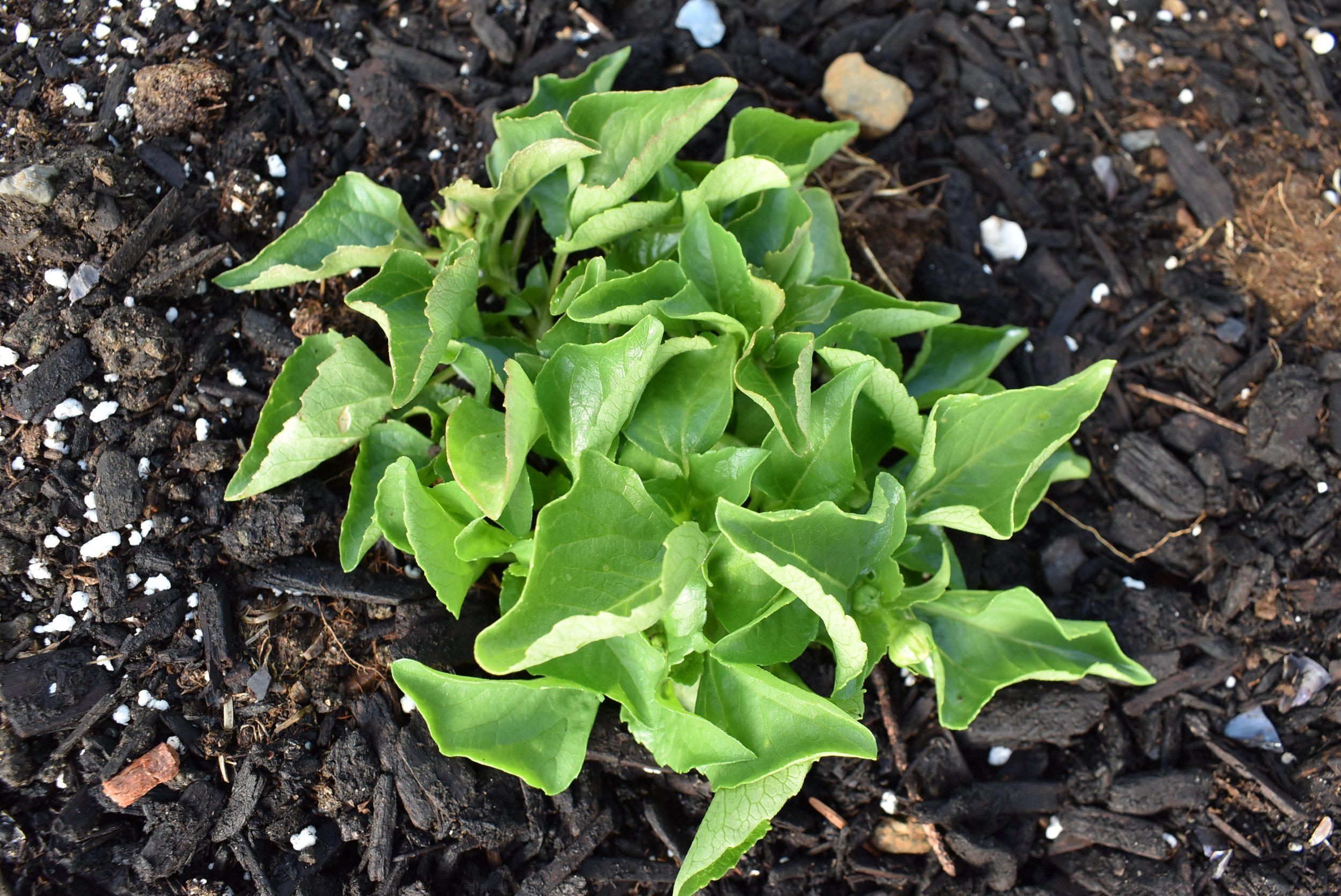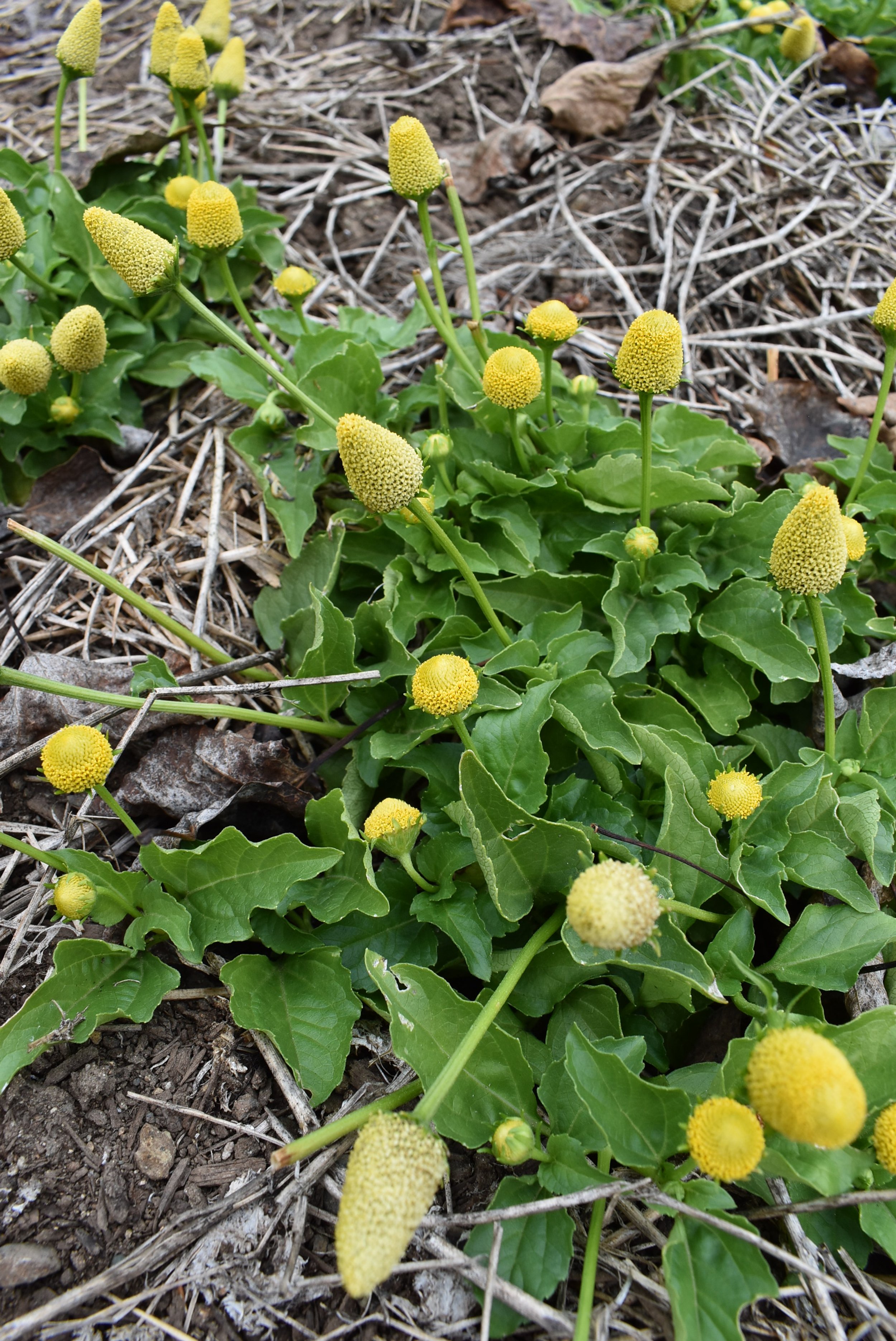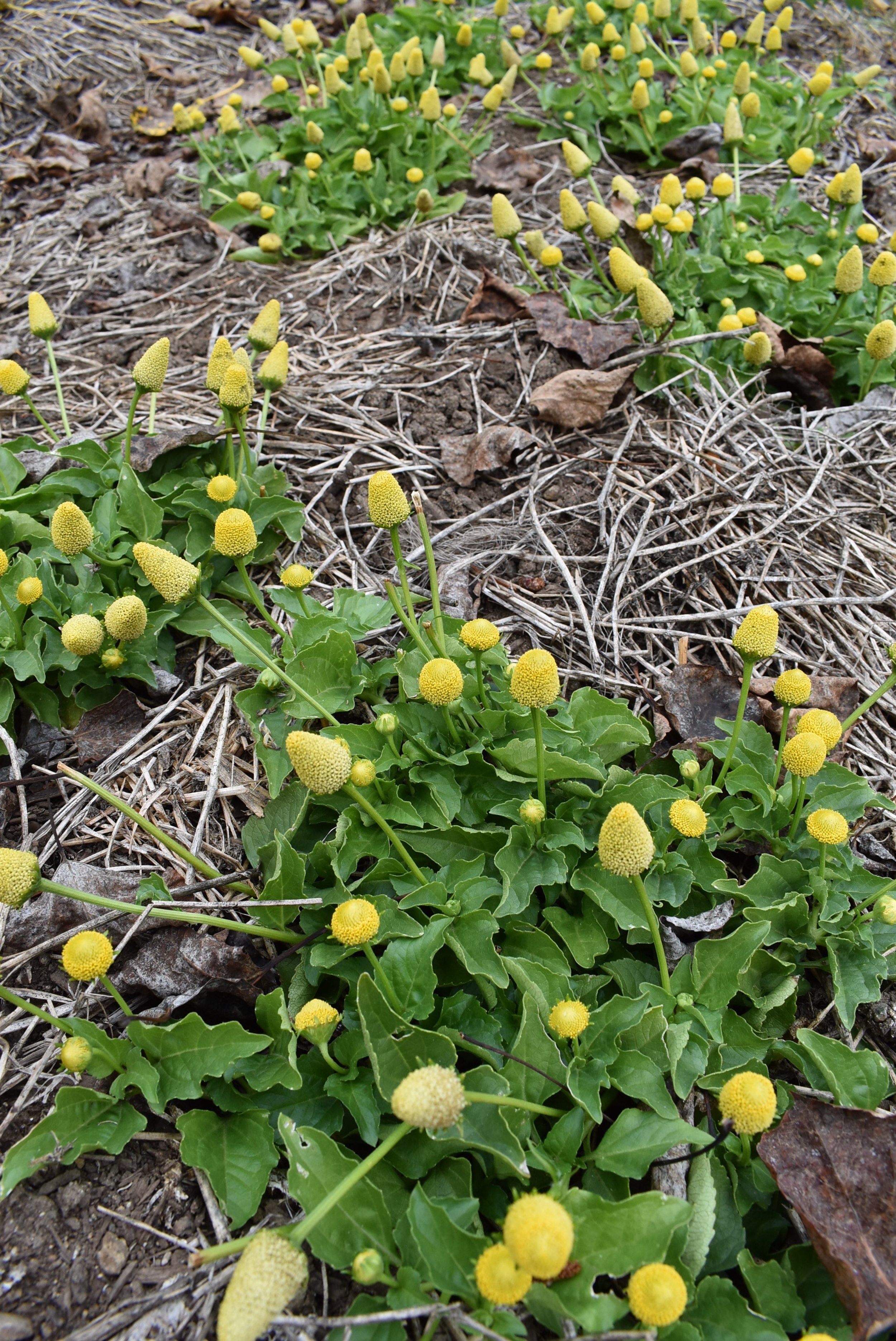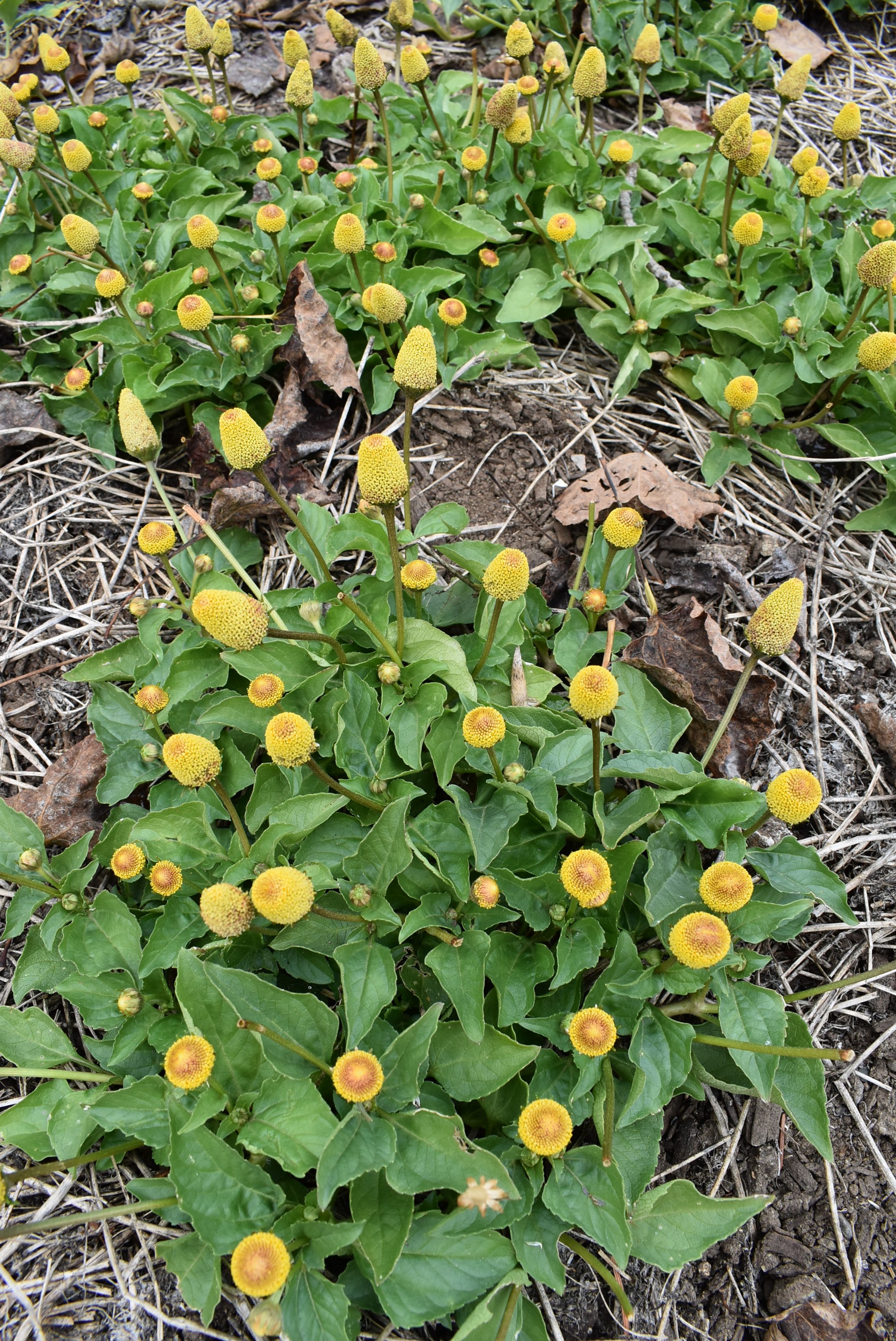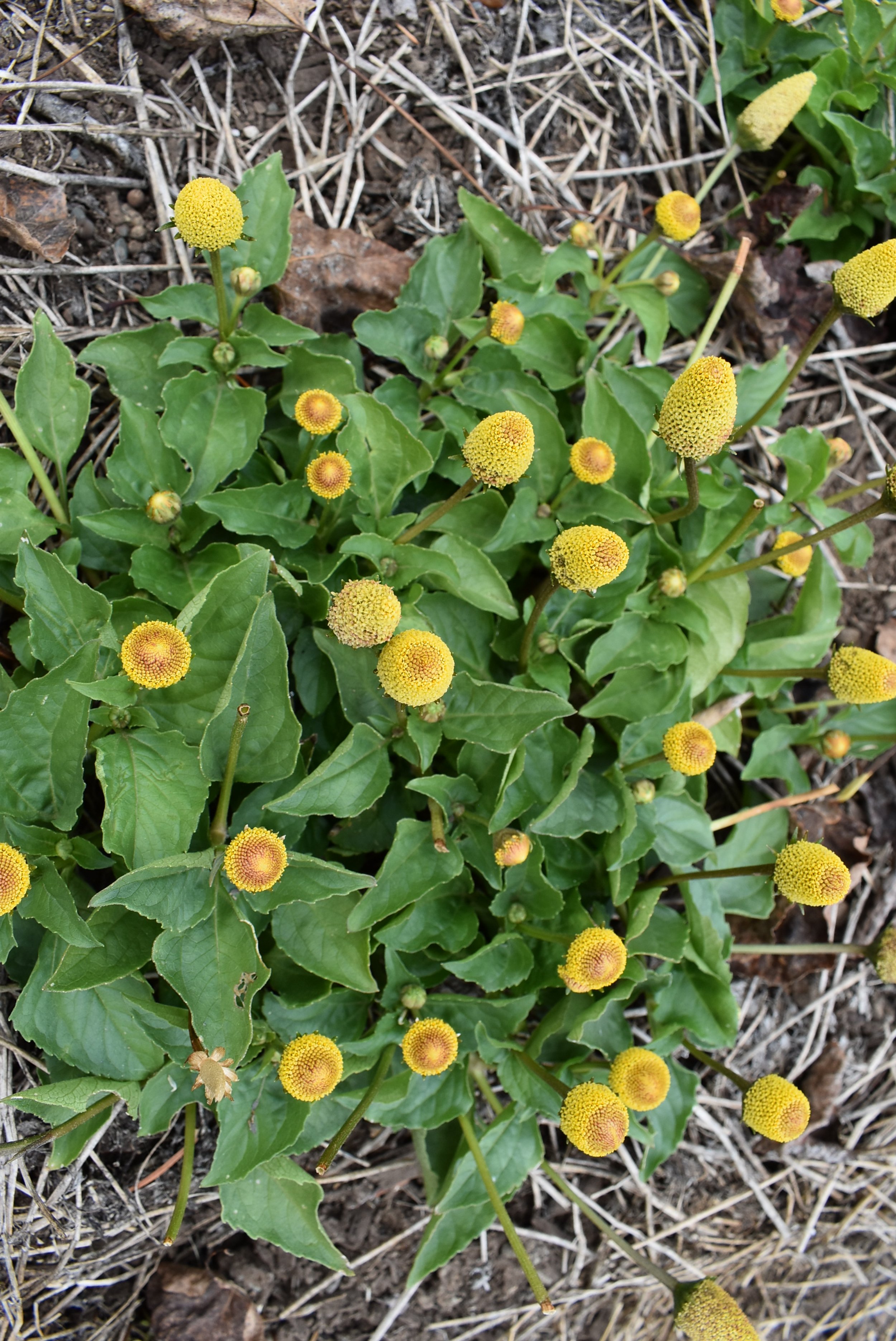Common Names
Spilanthes, Electric Daisy, Buzz Buttons, Szechuan Buttons, Toothache Plant, Jambu
Botanical Name
Acmella oleracea (synonym Spilanthes oleracea)
Plant Family
Asteraceae (Daisy Family)
Native Range
Brazil
Life Cycle
Spilanthes is a perennial in its native habitat in the tropics. Here in the temperate Pacific Northwest it is commonly grown as an annual herb.
Hardiness Zone
Perennial in zones 10-11, grown as an annual in zones 2-9.
Habit
Spilanthes plants are low growing, 4-10” high, with a mounding habit. Unique conical petalless yellow flower heads with deep red centre.
Sun/Soil
Full sun, fertile soil.
Germination/SowingThe seeds germinate easily and can be started in the spring time and once all danger of frost is past, the seedlings can be transplanted outdoors.
Growing/Care
The plants are not particularly fussy, but they do enjoy good garden soil, lots of sunshine, and lots of water.
Harvesting
The entire plant is medicinally active - the leaves, stems, roots - but the flowers are by far the strongest. They make a wonderful fresh plant tincture that can be used when you feel the first signs or a cold coming on, as a digestive aid, and as a mouth moistener. The flowers dry well and maintain their tingly properties for up to a year after harvesting if stored properly.
Once the plants begin to flower, usually in mid-July to early August, they will bloom though until frost, continuously forming new flower buds the more you harvest them.
Culinary Uses
Spilanthes is native to Brazil, where the leaves are used as a culinary herb for their bright lemony flavour.
Medicinal Uses
Spilanthes is kind of like the herbal version of pop rocks candies but amplified, like high voltage static electricity dancing around your mouth accompanied by a rush of saliva like waterfall rapids.
Party tricks aside, Spilanthes is a worthy medicinal herb, and the constituent responsible for the tingling effect, spilanthol, is also found in Echinacea. If you’ve ever chewed on fresh Echinacea root or seeds, or taken a dropper full of high quality tincture then you will be familiar with the mouth tingling sensation that this constituent creates.
Similar to Echinacea, Spilanthes can be used for its immune boosting and antimicrobial properties. The spilanthol contained in the herb creates a tingling and eventually a numbing sensation and this attribute can be applied effectively as a remedy for mouth inflammation and tooth pain. This is where the herb gets one of its many common names ‘Toothache Plant’.
Themes
Apothecary Garden, Attracts Pollinators, Container Garden.



